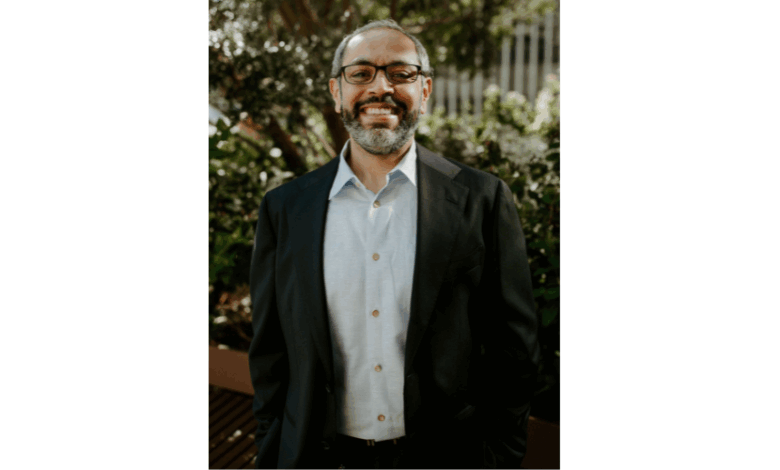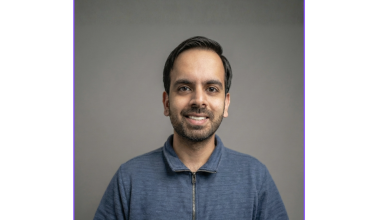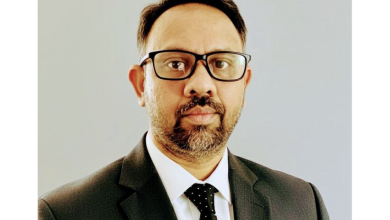
Nikhil Nanivadekar, Principal Engineer at Amazon and a pioneer of Generative AI solutions for Amazon Ads, has spent his career at the intersection of software engineering, open-source innovation, and applied AI. In this interview, he reflects on how generative AI is lowering barriers for small and medium-sized businesses, reshaping the creative process, and making advertising more conversational, contextual, and personal. From democratizing access to high-quality campaigns to balancing automation with authenticity, and ensuring sustainability and ethics in AI development, Nanivadekar shares a vision of an industry on the cusp of dramatic transformation, offering advice for the next generation of engineers and domain experts who will carry it forward.
From your perspective, how do you see generative AI transforming the advertising industry over the next five years, particularly for small and medium-sized businesses?
You know, I’ve been thinking a lot about this question, especially after watching how our recent agentic AI tool in Creative Studio has been received. What strikes me most is how we’re witnessing something similar to what happened when cloud computing emerged – suddenly, capabilities that once required massive infrastructure investments and specialized IT teams became accessible through simple web interfaces. Before cloud computing, if you wanted sophisticated computing power or data storage, you needed to invest in expensive servers, hire specialized staff, and manage complex infrastructure. Small businesses were essentially locked out of advanced computing capabilities. But the cloud didn’t just make computing cheaper – it fundamentally changed what kinds of businesses could exist and how quickly they could scale.
That’s exactly what’s happening now with generative AI in advertising. The transformation I’m seeing isn’t just about making ads faster or cheaper, though that’s certainly happening. It’s about fundamentally changing who gets to participate in sophisticated advertising campaigns. Right now, if you’re a small business owner selling handmade jewelry or artisanal coffee, creating a professional video ad for streaming or online services feels impossible. The production costs, the expertise required, the time investment – it’s all prohibitive.
But we’re moving toward a world where that same business owner can have a conversation with an AI system, describe their product and their customers, and walk away with multiple high-quality video concepts tailored to different audiences. The AI doesn’t just generate generic content – it understands the nuances of their specific audience, their brand personality, even seasonal trends that might affect their messaging. What’s particularly exciting is how this changes the creative process itself. Instead of starting with constraints – limited budget, limited time, limited expertise – small businesses can start with possibilities. They can experiment with ideas they never would have considered before, test different approaches, and iterate quickly based on what resonates with their customers.
Looking ahead, I think we’ll see advertising become much more conversational and contextual. The days of one-size-fits-all campaigns are ending. AI will enable hyper-personalized advertising that feels natural and relevant rather than intrusive. And because the barriers to entry are dropping, we’ll see much more diversity in the voices and perspectives represented in advertising – just like cloud computing enabled entirely new categories of businesses that simply couldn’t have existed in the era of expensive, complex infrastructure.
You’ve described your career journey as similar to hiking, where adaptability is key. How do you think that same mindset applies to engineers entering the rapidly evolving field of AI today?
Ha! Great question and one of my favorite metaphors. My wife and I love to hike. When we’re planning a challenging hike, we never just look at the trail map once and assume that’s exactly how the day will unfold. Weather changes, trail conditions vary, sometimes you discover a more interesting route along the way. My personal experience is that the folks who thrive in AI have that same flexible mindset. I see too many engineers trying to become experts in specific AI frameworks or models, thinking that’s their path to success. But here’s the thing – the specific tools we’re using today will likely be obsolete in two years. What won’t become obsolete is the ability to understand problems deeply, to think systematically about solutions, and to adapt when new tools become available. From my years of experience, the engineers who excel are the ones who can look at a customer problem, understand what we’re really trying to solve, and then figure out how to apply whatever the right tools are available to address that need.
I always tell new engineers to spend time understanding the fundamentals – not just of AI, but of the domains where AI is being applied. If you’re working on AI in advertising, learn about advertising. If you’re working on AI in healthcare, understand healthcare workflows. The technical skills are important, but they’re just tools. The real value comes from knowing how to apply those tools effectively – so you can build something that solves real problems.
And here’s something I’ve learned from hiking that applies directly to AI engineering: always be adaptable. The field moves so fast that your primary approach might become irrelevant overnight. The engineers who succeed are the ones who’ve been paying attention to alternative approaches, who’ve been experimenting with different techniques, who can adapt quickly when the landscape changes and thrive.
In your work with AI Creative Studio, how do you strike a balance between automation at scale and maintaining authenticity in the creative process?
There’s this tension between the efficiency that AI provides and the human touch that makes advertising actually connect with people. I’ve come to believe that the answer isn’t choosing between automation and authenticity – it’s about designing systems where they reinforce each other.
There is human judgement required in the creative process. The Creative Studio is designed in a way that we keep humans in the creative loop, but not in the way you might expect. Instead of having humans do the manual work and AI assist, we flipped it. The AI does the heavy lifting – analyzing product data, generating multiple creative concepts, optimizing for different audiences – but humans make the crucial decisions about brand voice, emotional tone, and cultural relevance. What I find fascinating is that this approach actually enables more authenticity, not less. When a small business owner doesn’t have to worry about the technical aspects of video production, they can focus entirely on what makes their brand unique. They can spend their time thinking about their customers’ needs, their brand’s personality, their unique value proposition. The AI becomes like a really sophisticated creative partner. It can generate dozens of variations of an ad concept, test different music choices, experiment with various visual styles – all while maintaining the core brand message that the human defined. This means brands can be more experimental, more willing to try authentic approaches because the cost of iteration is so low.
I think the key insight is that authenticity isn’t about the process being manual – it’s about the result feeling genuine and relevant to the audience.
You’ve emphasized the importance of democratizing AI. What do you see as the most significant barrier preventing widespread accessibility, and how can the industry address it?
The biggest barrier isn’t what most people think it is. It’s not the technology being too complex or too expensive. The real barrier is that we’ve created this mythology around AI that makes people think they need to become scientists or technical experts to benefit from it.
People generally hear “artificial intelligence” and immediately think they need to learn Python or understand neural networks. It’s like thinking you need to understand internal combustion engines to drive a car.
The breakthrough moment for me was watching my wife interact with some of the AI tools. She’s brilliant – an environmental engineer and geologist – but she has no interest in the technical details of how AI works. What she cares about is the end outcome, whether AI can help her analyze geological data more effectively or identify environmental patterns she might miss. She doesn’t need to know how the AI works; she just needs to know how to ask it the right questions.
I think the industry needs to stop celebrating technical complexity and start celebrating practical utility. We need to build AI tools that feel as natural as having a conversation with a knowledgeable colleague. The goal should be to make AI so intuitive that people forget they’re using AI at all.
We also need to change how we talk about AI careers. Not everyone needs to be an AI engineer. We need AI translators, AI trainers – people who understand specific domains and can guide AI development in those areas. The most impactful AI applications I’ve seen come from collaborations between technical experts and domain experts, not from technical experts working in isolation.
Given your concerns about environmental impact, what innovations or practices do you believe will help make AI development more sustainable?
This is something that keeps me up at night, honestly. I’m seeing promising work in model efficiency – techniques that can achieve similar performance with dramatically fewer parameters/tokens. Some of the most impressive AI capabilities I’ve seen recently have come from smaller, more focused models rather than the massive general-purpose ones.
There’s also a huge opportunity in AI-assisted sustainability. Think about it as using AI to optimize energy usage in data centers, to improve the efficiency of algorithms, even to design better cooling systems. AI can be part of the solution to improve environmental impact.
The key is being intentional about it. Right now, most AI development prioritizes performance over efficiency. We need to start treating energy consumption as a first-class constraint, just like we do with latency or accuracy. When environmental impact becomes a key metric that teams optimize for, I think we’ll see rapid innovation in sustainable AI techniques.
Your robotics workshops for kids highlight the importance of early exposure to technology. How do you envision the next generation of AI talent being shaped by programs like these?
What I love about working with kids in these robotics workshops is how naturally they approach technology. They don’t have the fear or intimidation that adults often bring to new technologies. When a robot doesn’t work the way they expect, they don’t see it as a failure – they see it as a puzzle to solve. This mindset is going to be crucial for the next generation working with AI. AI systems are like collaborators that you need to understand and work with, rather than tools that you simply operate. The kids who excel in the robotics workshops are often the ones who are comfortable with ambiguity, who enjoy experimenting, who can iterate quickly when something doesn’t work. These are exactly the skills that will be essential for working effectively with AI systems. But what excites me most is how these workshops shape kids’ relationship with technology more broadly. They’re learning that technology isn’t magic – it’s something that humans create, and therefore something they can create too. They’re developing what I call “technological agency” – the confidence that they can shape how technology develops rather than just being passive consumers of it. I think the next generation of AI talent will be much more collaborative and interdisciplinary than the current generation. The kids in the workshops come from all different backgrounds and interests. Some are drawn to the mechanical aspects, others to the programming, others to the creative possibilities. But they all learn to work together and appreciate different perspectives.
This collaborative mindset will be essential as AI becomes more integrated into every field. We’ll need people who can bridge between AI capabilities and domain expertise, who can translate between technical possibilities and human needs, who can ensure that AI development serves diverse communities and use cases.
AI-human collaboration is something you’re excited about. Can you share an example of how you’ve seen AI not just replace but enhance human creativity and problem-solving?
You know, I see this AI-human collaboration playing out beautifully in our work every day, and it reminds me of something I mentioned before – how I use AI as a creative catalyst, even in something like baking bread. I was exploring bread recipes using AI the other day, and it suggested an unexpected combination of different flours that I never would have thought to try. Now, the AI didn’t bake the bread for me – I still had to understand the technique, feel the dough, adjust for my kitchen’s temperature, and make those final judgments that come from experience. But the AI expanded my creative possibilities in ways I wouldn’t have discovered on my own.
This is exactly what we’re seeing in advertising. Take our recent work with Bird Buddy, the smart bird feeder company. They used our agentic AI tools to create a Father’s Day campaign, but here’s what’s fascinating – the AI didn’t replace their creative vision. Instead, it amplified it. The human team provided the emotional insight about fathers connecting with nature, the brand personality, and the campaign objectives. The AI then generated multiple creative approaches, handled the technical production details, and even suggested contextual elements they hadn’t considered. But what makes this a true collaboration story is that the humans were freed up to focus on what they do best – understanding their customers’ emotional drivers, refining the brand message, and making strategic decisions about which creative directions to pursue.
What excites me most is how this fundamentally transforms the creative process itself. Instead of humans getting bogged down in repetitive execution tasks – whether that’s generating multiple code variations, iterating through design prototypes, or handling technical implementation details – they can now focus their mental energy on the truly creative challenges: understanding complex problems, architecting elegant solutions, and exploring innovative approaches. The AI handles what I call “creative amplification” – taking a breakthrough human insight and exploring it across dozens of different implementations, contexts, and approaches that would be practically impossible for any individual to generate manually. It’s like having a tireless creative partner that can instantly show you how your idea might work in twenty different scenarios, freeing you to spend your time on the deeper questions: What’s the root problem we’re really trying to solve? What elegant solution exists that no one has thought of yet? How do we approach this challenge in a fundamentally new way? This shift allows human creativity to operate at a higher level – moving from execution-focused work to pure creative problem-solving and strategic thinking. We’re essentially giving human imagination more space to explore possibilities that were previously constrained by time and technical limitations. Whether you’re an engineer designing systems, an architect planning spaces, or a researcher exploring hypotheses, AI amplifies your creative capacity to think bigger and explore further.
This isn’t about AI doing the creative work – it’s about AI giving human creativity more room to breathe and explore.
As someone deeply engaged in AI, what advice would you give to professionals from non-technical backgrounds who want to contribute meaningfully to the AI space?
The best advice I can give is to start experimenting. Don’t let your fear of not being technical enough hold you back. The AI field needs people who understand domains outside of technology – healthcare, education, agriculture, arts, social services, you name it.
I learned this lesson from watching my wife work. She’s an environmental engineer, and when she looks at AI applications in her field, she immediately sees opportunities and risks that I would never notice. She understands the regulatory environment, the practical constraints of fieldwork, the nuances of environmental data that would take me years to learn.
The most impactful AI projects I’ve seen happen when domain experts and technical experts work closely together. The domain experts identify the real problems worth solving and provide the context needed to solve them well. The technical experts figure out how to apply AI capabilities to address those problems.
So my advice is to become an expert AI collaborator rather than an AI developer. Learn enough about AI capabilities and limitations to have informed conversations with technical teams. Understand what AI can and can’t do well. But focus most of your energy on becoming even better at your own domain expertise. Start experimenting with AI tools in your field. Not to become an AI expert, but to understand how AI might change your work and what opportunities that creates. Most importantly, start identifying the problems in your field that could benefit from AI solutions.
The professionals who will be most valuable in the AI era are those who can bridge between AI capabilities and real-world needs. They’re the ones who can translate business problems into technical requirements, who can evaluate whether AI solutions actually solve the problems they’re supposed to solve, who can ensure that AI systems work effectively in real-world contexts.
Don’t try to become a different person. Become a better version of who you already are, enhanced by AI capabilities.
Disclaimer: Nikhil is speaking on his own behalf and his opinions do not necessarily represent the view of Amazon




